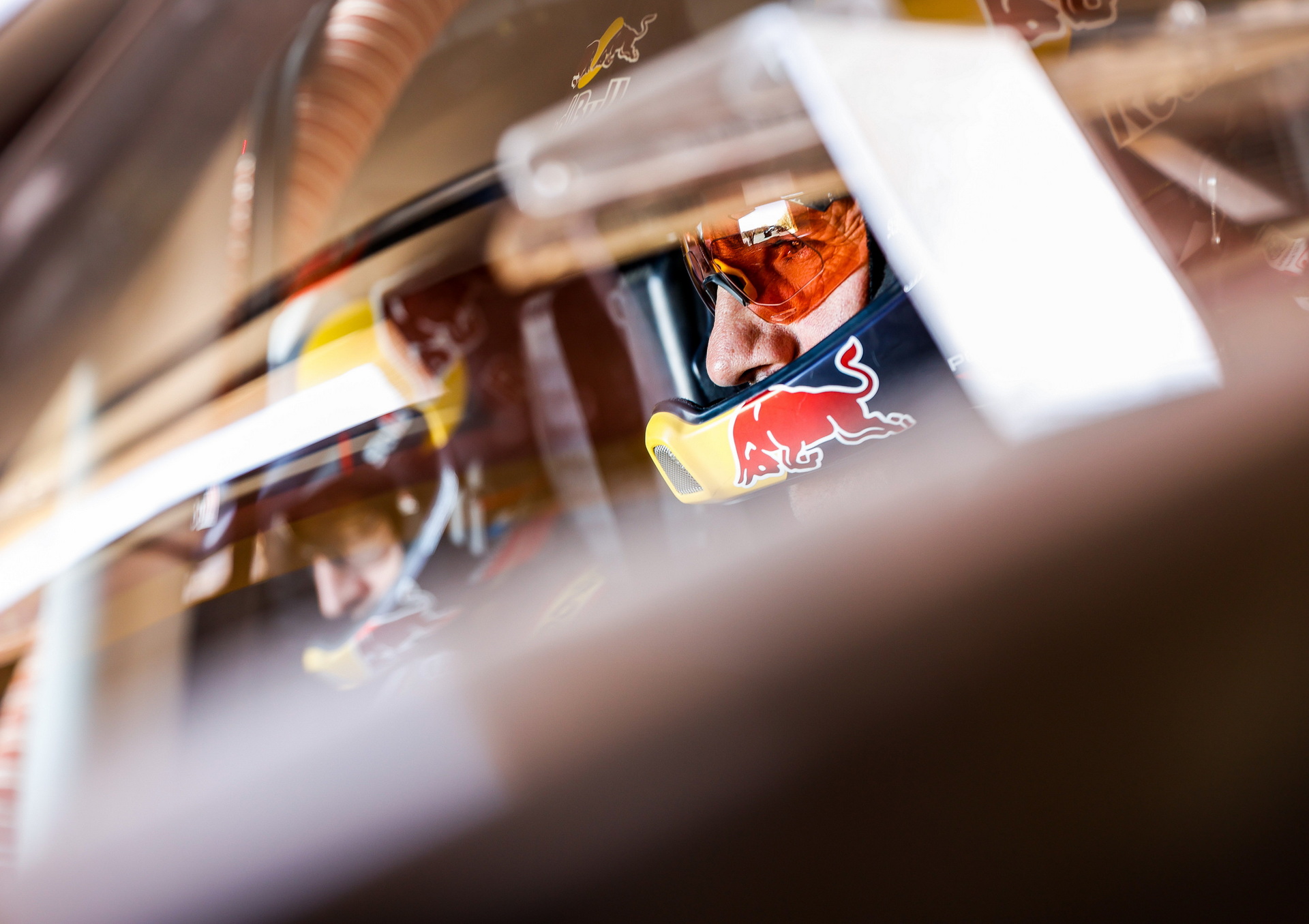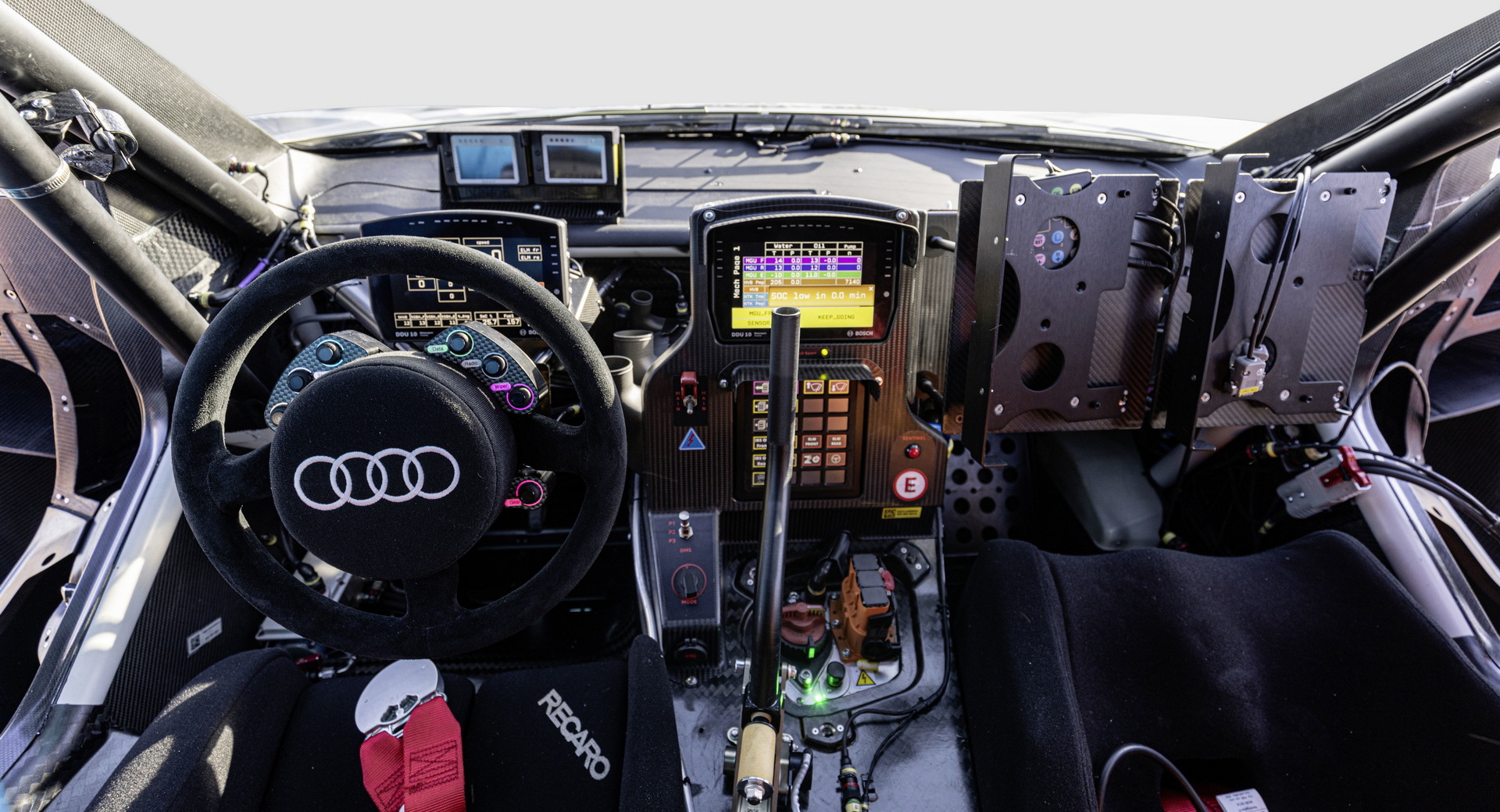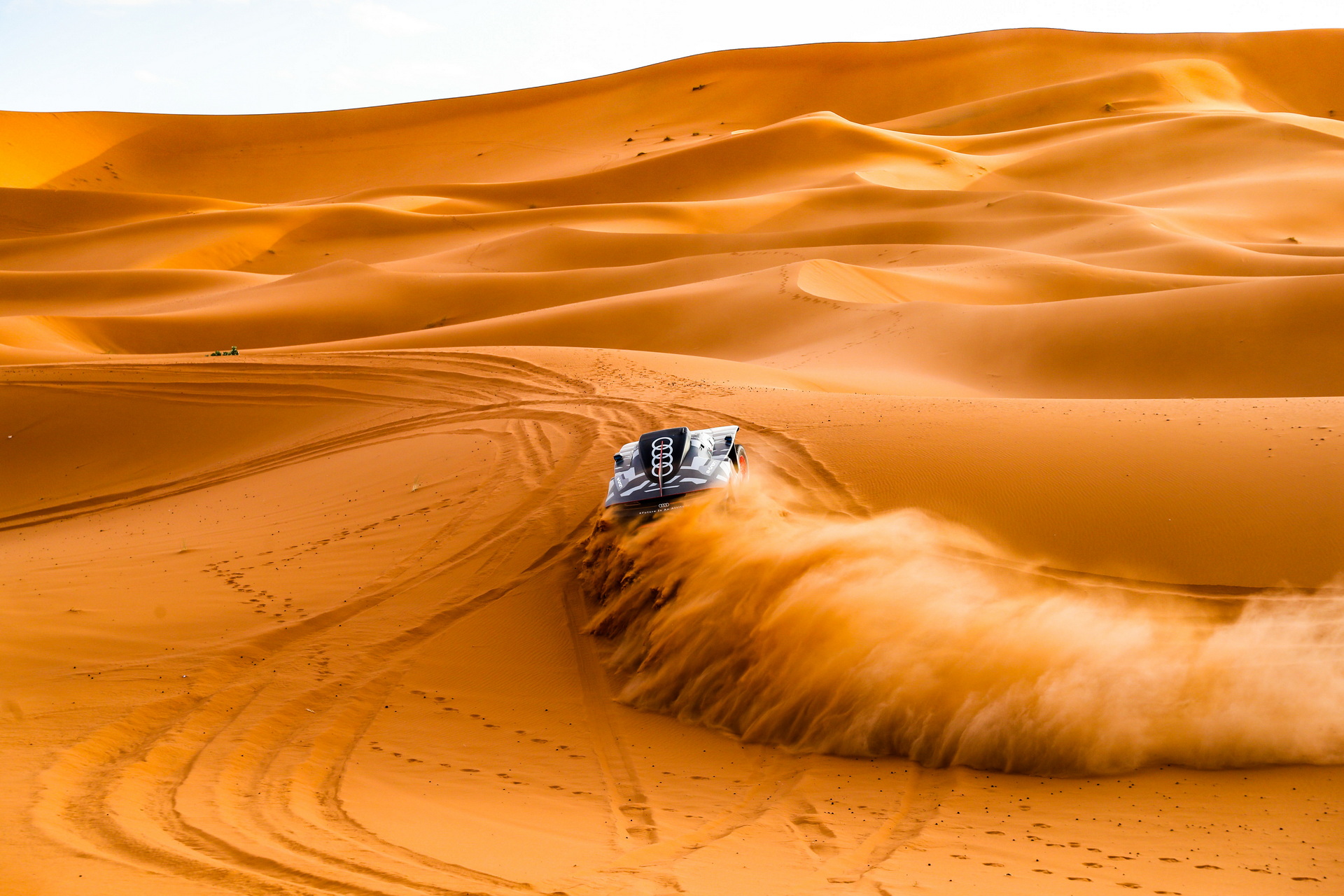On January 1, Audi will head to Saudi Arabia with its latest rally car: the RS Q e-tron. Ahead of the race, the automaker has given us a look inside the surprisingly complex cockpit of the hybrid vehicle.
Dakar racers have become wildly complex over the years and the job of the co-driver has evolved considerably. The driver’s job remains largely the same, though.
Audi’s drivers, Mattias Ekström, Stéphane Peterhansel, and Carlos Sainz get a familiar set of controls, though the RS Q e-tron’s only means of movement is by electric motors (which are charged by a gas generator) so the drivers don’t need to worry about changing gears.
Read Also: Audi RS Q e-tron Revealed For The Dakar Rally, Features Electrified Powertrain With 671 HP
The electric power, though, does require some technical cleverness on Audi’s part, and means that not only will the regular brakes incorporate energy regeneration, but the hydraulic handbrake also incorporates energy regen too.
On the steering wheel, meanwhile, buttons operate the horn, the wipers, and data entries through which the driver can store information about anomalies while driving with a time stamp for later analysis. The speed limiter (for zones with a speed limit) is also there. A plurality of screens also gives the driver plenty of information. Behind the steering wheel, the first screen has information about tire pressures, gear (forward, neutral, reverse), and current speed. It can also give the driver warnings about an imminent shutdown or other issues.
A second small screen located above and to the left of the steering wheel is basically a compass, while the third screen to its right also shows the vehicle’s current speed. A fourth screen sits between the driver and the co-driver and marks the start of the co-driver’s responsibilities. It gives them information about the brake balance, the brake-by-wire system, and a number of other functions. Below it, a library of buttons allows the co-driver to control 24 functions like air conditioning, and individual functions can be shut off in case of damage.
Co-drivers are as much mechanics now as navigators, not unlike in the early days of motor racing. Unlike in those early days, though, they have to operate the functions and manage the car on sand dunes at speeds of up to 170 km/h (106 mph).
“I now spend only half my energy on navigation, the other half on operating the car. But I love this new challenge,” says Edouard Boulanger, Peterhansel’s co-driver.
The navigation is now more difficult than ever, too. Despite being given tablets with route information instead of a paper booklet (which teams are provided with but are only allowed to use if the tablet breaks down), the route information is kept deliberately vague to increase the challenge. Although the tablet has GPS, it can only be used to confirm that the team has driven through one of the digital waypoints. Co-drivers must use compass directions, distances, pictograms, special aspects, and hazard warnings to actually find the waypoints.
To add to the challenge, teams are only actually given route information 15 minutes before the start of the stage each morning, rather than the night before as was historically done.
The final addition to the cockpit is the Iritrack system that communicates directly with event organizers and is used in case of an emergency. Through it, a team can ask for medical assistance for themselves or another team. The system automatically feeds information to the organizers in case of a big off, but the team can use the system to reassure staff that they don’t need medical attention or rescue if they have a smaller accident.
It’s a lot to manage, and all of the systems and the people operating them will put to the test for the first two weeks of 2022.

















